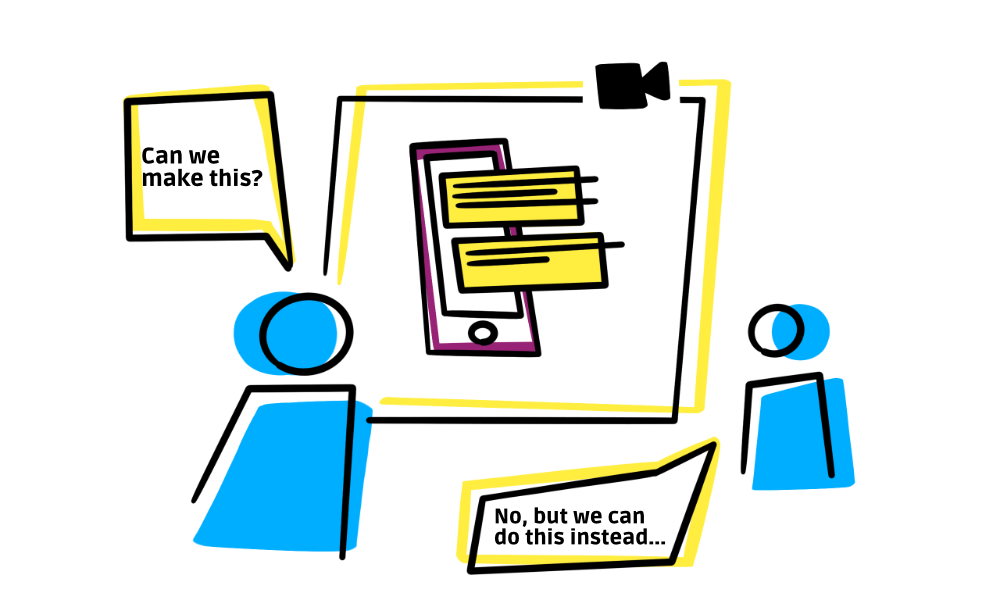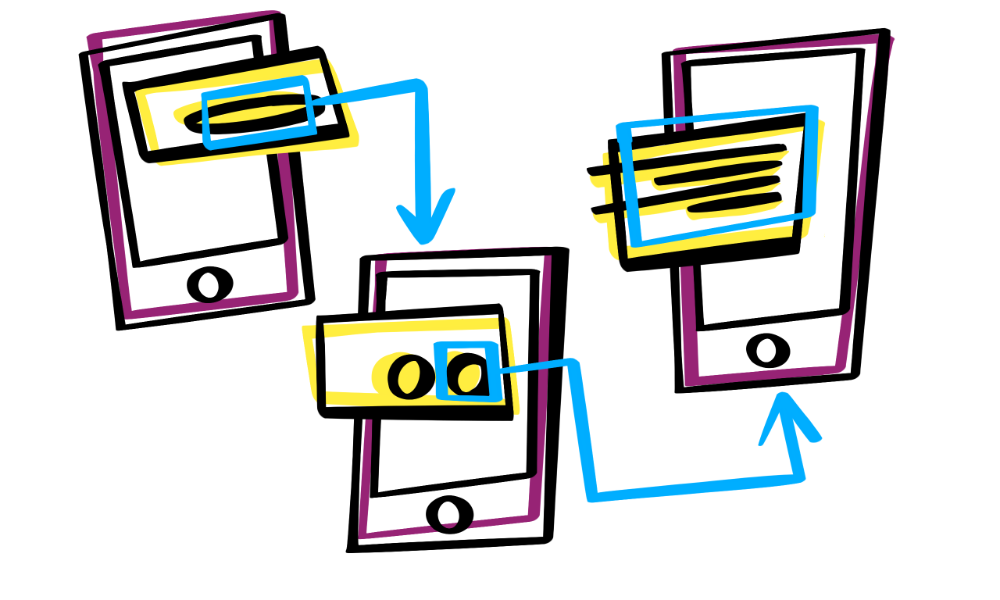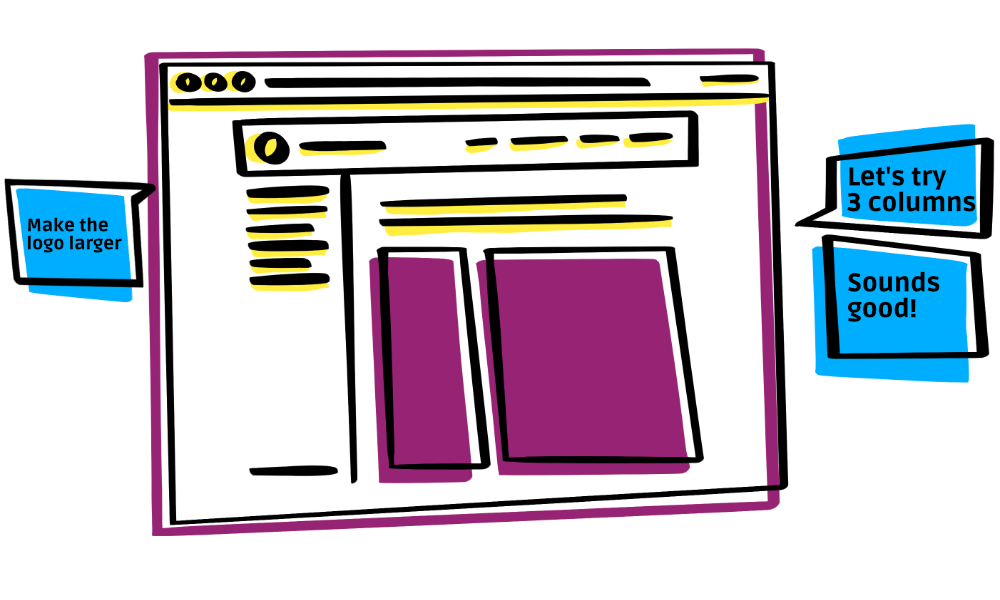Communication Tools for a Remote Design Team
Jensen Laatsch | November 4th, 2020

I think we can all agree that these are weird times. Now, more than ever, we need to make sure we are communicating as fluidly as possible as individuals and as a team. In a traditional office setting a person would be able to walk over to a colleague’s desk and ask direct questions while pointing at a screen, but that isn’t possible for many of us now. Many of us have become scattered and disconnected from our coworkers. Don’t get me wrong, the work-from-home push has come with many benefits, but we can only be effective if we are constantly sharing information with those who need it. There are so many different tools you can use to share ideas and keep strong communication in the workplace, even when everyone is on their own island.
Chat services
Make sure you have a good tool for instant text chat across your organization. Good instant chat at both the organization level, and at the team level is hugely important day-to-day, and even moment-to-moment, when people are collaborating on a project and you need quick answers. Even if you already have a meeting set up, it’s still helpful to sometimes send that quick text chat just to ask about something specific or double check a task.
It’s really easy for situations like getting feedback on designs or making sure that functionality matches up with design mocks. I can quickly send an image to the dev team and get back good feedback that will drive changes or confirm mockups.
Video chat and screen sharing
I’m sure we’re all suffering from differing levels of Zoom fatigue. Live video and screen sharing tools really are incredibly useful and should be part of everyone’s day at this point. One of the best ways right now to make sure everyone is on the same page on a project is to get into that video call and talk about the project in real time.
As a designer, it’s great to be able to share my Sketch project and provide live updates as we talk through ideas. This has also been really helpful when joining a new project or a new team. There have been times where a quick video call with a developer on the project has saved me a lot of time reading documents and trying to catch up on what’s going on. Video calls can be a huge lifesaver and really speed up the process of communicating overall.

Collaborative tools for communication and design
Services like Lucidchart, InVision’s Freehand, or Miro are excellent for quickly and easily collaborating in meetings with multiple people. This is especially helpful when commenting on design ideas, or even at the highest level of planning or brainstorming for a project. Take advantage of services like these as much as possible and keep them up to date so you can quickly link back to them if needed.
There is an added benefit to using shared, collaborative services like these. They allow anyone included on the team to quickly pull up the project and see what is saved to date, letting people get the info they need whenever they want.
Prototyping over screenshots
Prototyping, and ideally rapid prototyping also fall into the category of communication for me. Tools like FramerX, Figma, and clickthrough in InVision, all let people see how something is supposed to work as well as what it should look like. For designers, this helps a lot to communicate a whole idea and can be invaluable in the design-to-dev handoff. Taking the extra time to make any level of prototype can be an enormous improvement over just sharing static screenshots.
This is part of the process that I struggle with. Designs move pretty quickly when teams are collaborating effectively. It can be tough to keep up proper clickthroughs and prototypes sometimes, but it’s certainly worth the effort.

Still include screenshots
Yeah, I just dissed static screens a bit. Static screenshots or mockups are still way better than nothing when trying to convey an idea to a person or team. Adding a little bit of context to the messages you’re sending can help everyone understand exactly what you mean. So always support questions or communication about a project with images if you can. People tend to respond and understand images better than just words.
Images and screen captures can be great in supporting video calls as well. Sometimes video quality can dip, and it can also allow people to easily recall what might have been said in the call.

Still send that email
All of this might sound like I’m steering people away from more traditional business communication like email, but email is still necessary. If you need quick info from a teammate, then maybe Slack is the way to go. If you need something more official or professional, in a case where you might be sending info to someone outside your immediate team, then email might be the way to go. Especially if clients or collaborators are not included in your day-to-day chat services. Definitely still send that email.
It’s always great to support that email with a quick text chat to make sure everyone is on the same page. “Hey, I just sent those images over to the client. Did you see that?” “Yep, I got it. Thanks”. Now you know that someone else is tracking that correspondence, and you can be sure that it was sent.
The takeaway here is that we might need to put a little extra effort into making sure people we work with have the information they need to be effective in their roles. These tools will not only improve how often you communicate, but they will impact how effectively you communicate as well. You can find some more time management tools here.
Keep that Slack thread going.
